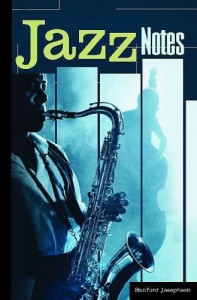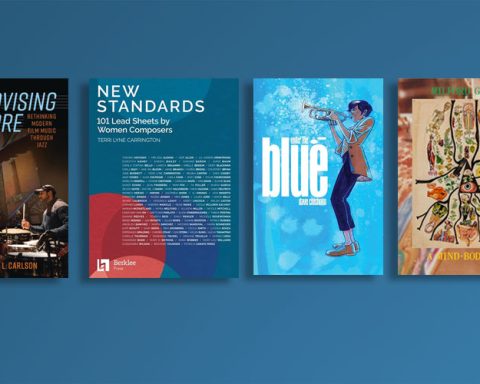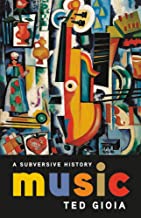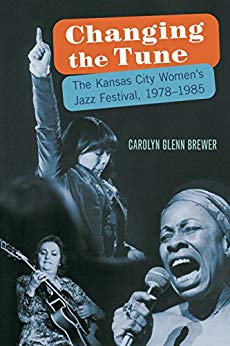 Jazz Notes: Interviews across the Generations
Jazz Notes: Interviews across the Generations
By Sanford Josephson
Praeger, Santa Barbara, CA, 2009;
207 pp.; $49.95 hardcover
This is a collection of profiles unlike any I have encountered in that it both updates interviews done three decades ago and presents interviewees from the perspectives of musical associates or admirers. The profiles originally appeared between 1978 and 1983 in such publications as the Indianapolis Star, Toledo Blade, Cincinnati Enquirer, New York Daily News, Los Angeles Herald-Examiner and St. Louis Post-Dispatch, a spread that indicates both the author’s diligence in placing his articles and the receptivity of the mainstream press of that day to jazz coverage. Yep, the times they have a-changed.
Nearly two dozen musicians are featured, and in all but four cases the profiles are based on interviews done by the author. The exceptions are Fats Waller, Art Tatum, Joe Venuti and Count Basie, whose stories are compiled from other sources. The book covers a broad spectrum, encompassing musicians active in the 1920s and ’30s to musicians born in the 1940s and ’50s. Several of those adding commentary were born in the ’80s and one in the ’90s.
Hoagy Carmichael tells Josephson, “The first eight bars of ‘Stardust’ were whistled by me as I walked across the campus of Indiana University.” Venuti recounts several of his notorious pranks to Dick Cavett, for example, nailing to the floor the shoe of a pianist who would not take his foot off the pedal. In the Basie chapter, Frank Wess recalls that the bandleader “didn’t want to carry the music” on a UK tour “because it was heavy.” So they “did the whole tour without music, and that really knocked them out,” and then they were “invited back for a command performance.” Marvin Stamm opines, “Basie’s band, even though it had great soloists, was really about the ensemble.” From Dizzy Gillespie we learn that “Music is full of fun, but … there’s a lot of hard work behind that fun you’re having.”
In a chapter titled “Road Warriors,” Earle Warren, Howard McGhee and Milt Hinton tell of the racism they encountered not only in the South but in Chicago and, McGhee says, “some of the most prejudiced places in America — like North Dakota and South Dakota.” Pianist and singer Noreen Grey Lienhard remembers first meeting McGhee in the early 1980s: “With Howard, the music always came first. It wasn’t about me being a woman, or if you’re white or black or this age or that age.… He had endured so much discrimination during his life that … he thought, ‘I’m not going to do this to anybody, ever.’”
Dick Hyman relates how he has achieved a balance throughout his long career between performing in clubs and concert halls, studio work and composing, including film-scoring for Woody Allen and others. Stanley Cowell looks back to a dimly remembered visit with Art Tatum at his family’s Toledo home when he was six, recalling that the pianist, wishing simply to relax, was coaxed into playing and then brilliantly rendered “You Took Advantage of Me,” a subtle and witty comment on the circumstances.
Penetrating insights abound, but here are two more that leapt from the page.
David Sanborn: “The cutting edge of the innovation of music, more often than not, happens in the jazz world.”
Billy Taylor on young musicians: “They have to know the history, relate to the history, work through the history, and realize they are part of the continuum.”
In addition, Dave Brubeck, Jonah Jones, Helen Humes, George Shearing, Arvell Shaw, Jon Hendricks, Norris Turney, Gerry Mulligan and Maynard Ferguson are profiled. Among the more than 50 musicians interviewed to reflect upon the principals are Bob Wilber, Bill Charlap, Butch Miles, Cecil Bridgewater, Warren Vaché, Bria Skonberg, Marian McPartland, Bill Mays, Virginia Mayhew, Norman Simmons, Randy Sandke and Ed Polcer.
Notwithstanding his evident deep knowledge of jazz and its history, the author does make some careless errors. Although it closed in 1974, Minton’s Playhouse was purchased in 2006 by Earl Spain, of St. Nick’s Pub, and was reopened as a jazz venue. It was not guitarist Charlie Byrd but clarinetist and vibraphonist Tommy Gwaltney who founded DC’s Blues Alley. The Modern Jazz Quartet did disband in 1974 but reunited in ’76, ’77 and ’81 and continued to tour from ’82 until ’97. While Frankie Trumbauer could play many reed instruments, his main one was not the tenor but the C-melody saxophone, on which he recorded, with Bix Beiderbecke, the 1927 “Singin’ the Blues” that so impressed Lester Young. Dave Liebman’s principal instrument for many years was the soprano saxophone but he is identified only as a tenor player. Dave Lambert did not die in an auto accident; he was hit by a tractor-trailer in 1966 while changing a tire on the Connecticut Turnpike. In addition to mentioning that Frank Teschemacher died young, Josephson could have clarified that Teschemacher died in an auto accident in Chicago in 1932. Also, Kenny Davern’s death in 2006 is not mentioned.
That said, I enthusiastically recommend this collection because of the author’s interviewing skills — he frequently elicits telling and unfamiliar revelations from his subjects — and for the variety of views casting light upon those subjects, 22 luminaries of the art form. Josephson clearly has deep feeling for the music and its makers and that feeling comes across on every page.





